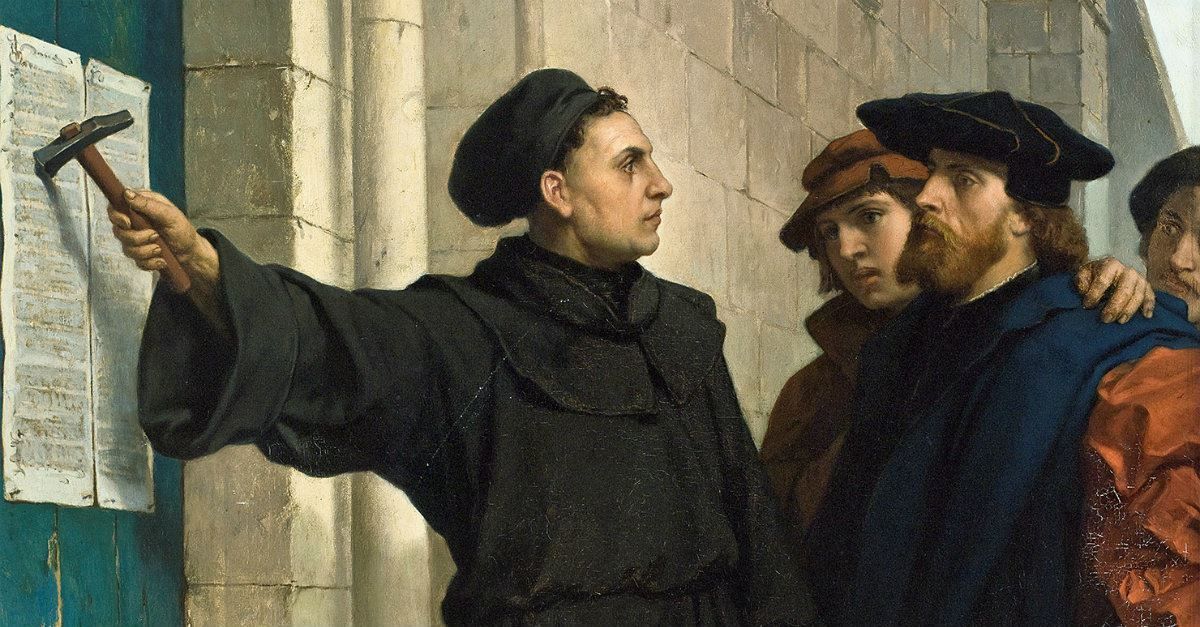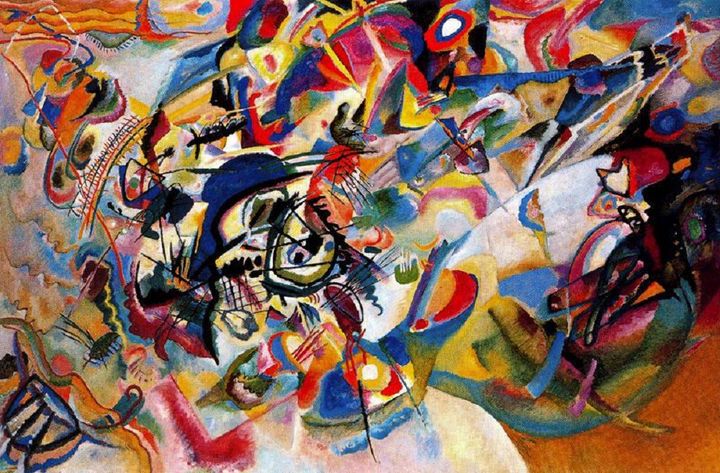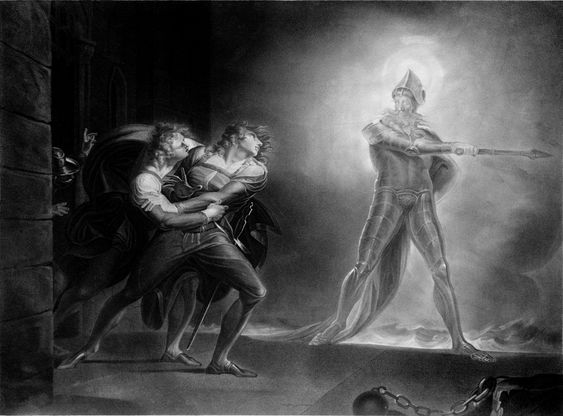Bitcoin: The Modern Reformation?
Exploring Parallels with Past Socioeconomic Shifts.

If you have any questions, comments, or suggestions - please contact Isaac Piano on Tela:
tela.app/id/isaac_piano/e400d4
Add Isaac Piano on LinkedIn:
linkedin.com/in/isaac-piano-87224b67
Tuur Demeester is a researcher who runs Adamant Research. He aims to identify historic patterns and trends, and use them to make predictions about the future of society, economics, finance and Bitcoin.
In 2019 he published a paper "The Bitcoin Reformation". This article contains my personal notes and analysis on the predictions in this paper.
This paper can be found at https://adamantresearch.com/files/archive/BitcoinReformation2019.pd
Section 1: Introduction and Methodology.
1. The author looks to identify secular trends through finding historical parallels. He draws parallels between the Reformation and Bitcoin. He describes the Reformation and surrounding events as a blueprint for how the world may look in the future.
Section 2: The author describes four preconditions of a reformation.
1. Precondition 1: A rent-seeking Monopolistic Service Provider. The author notes that the Catholic church was a provider of spiritual services with a monopoly over access to heaven and to forgiveness of sins. It is argued that if the provider of religious services overcharges for its product, then the common citizenry and the civil authorities may look for new providers.
a. Analysis: The forgiveness of sins was an extremely important part of the social fabric of medieval Europe. At every level of society individuals believed in the authenticity of heaven and the extreme importance of forgiveness for their sins. Failure to receive forgiveness would condemn a person to purgatory or hell. The generally accepted methods of securing forgiveness were donations to the Church. Additionally, the Church also provided the legal framework for disputes and actions. Priests often doubled as lawyers and charged for these services.
2. The modern-day parallel to the Church as a monopolistic service-provider is the International Monetary and Financial System (IMFS). Since 1944, the US Dollar has been the reserve currency of the world which has allowed the US to control large portions of the financial & legal systems of the world. This market power has allowed them to exclude rivals from the market. The fiat-banking system controls the keys to pensions and wealth, similar to the Church’s gatekeeper function to heaven and salvation.
a. Analysis: The US has made use of sanctions in order to prevent countries from accessing the IMFS. These sanctions are levelled against countries which do not toe the party line. Recent examples include Iran and Russia. Currently, Russia and China are looking for ways to operate slightly outside of the IMFS through the establishment of the BRICS or through pricing a percentage of oil contracts with Saudi Arabia in Yuan/Rubles.
3. Today, the IMFS is overcharging for its services through the inflation tax, negative interest rates (in 2017) and currency wars. This creates the conditions in which citizens and civil authorities may begin to look for other dispensers of financial services. Political entities may begin to look to use Bitcoin as a fully-fledged currency.
a. Analysis: This process has begun. Companies such as Tesla and MicroStrategy own significant amounts of Bitcoin. The Bitcoin ETFs have been launched and have raised billions of dollars in capital. Countries such as El Salvador have adopted Bitcoin as legal tender. This is not to say that we are anywhere near approaching significant levels of adoption, but it is likely that this is the beginning of a wide movement away from the IMFS.
4. Precondition 2: Technological Revolution: Catalyst for Change: There were a series of technological changes in the 16th century which were widely adopted. The printing press is one of the most important of these technological changes. Amongst others were double-entry bookkeeping and improvements in compasses and hourglasses which drove the cost of accounting and scientific research down. In the modern day, emails and telecommunications have led to remote working. Mass ease of use of data storage and computation have lowered infrastructure costs and overheads. Open-source software have made a wide range of robust and easy-to-use tools for programmers and social media has allowed the rapid sharing of data and the non-bureaucratic sharing of information. Cryptography has generated a suite of defensive technologies which can be used for permissionless security solutions.
a. Analysis: Similarly to the advancements in technology which occurred in the 16th century undermining the Church’s monopoly on information, modern advancements have undermined the monopoly on the sharing of information, data storage, and defensive cyber-technologies. This has set the conditions for smaller, more agile political and social entities to use these technologies to build and defend private networks outside the control of more cumbersome national governments. This can be seen in the creation of new Network States (please take a moment to vote for Tela Network on the Network State Dashboard !). Additionally, Facebook, Twitter, and other entities are beginning to flex their muscles as alternative entities to national governments. It is important to note however, that this does not mean there are yet viable alternatives to national governments. We are simply at the start of this process.
b. Philip Bobbitt notes in his book “The Shield of Achilles”, published in 2002, that the proliferation of the Xerox printer allowed for the dissemination of information outside of mainstream media companies. Although Twitter, YouTube, and other companies maintain the ability to curate what is put up on their platforms, they do not have complete control over what sort of information is disseminated.
5. Precondition 3: A New Economic Class: People with Something to Fight For: Trade increased significantly during the 16th century centred primarily on the river Rhine. This served as the major trade route through Europe and the northern European cities in the Netherlands and Northern Germany were the main beneficiaries due to the location at the mouth of the river. Cities with a pro-trade attitude and a good rule of law saw various industries (printing, weapons, tapestries, etc.) grow immeasurably. Specialists at the top of these industries could generate business across the whole of Europe. Overall wealth grew as a result and a new merchant class was able to challenge the dominance of the Church and landlords.
a. Analysis: At the time of writing (2024), wealth appears to be decreasing for most people. The majority of western populations are struggling with the increases in the cost of living and financial instability. However, it is obvious that those who are connected to or own technologically innovative industries are experiencing significant increases in wealth. These industries are primarily information- and data-focused such as Tesla or social media companies.
b. It could be said that new information networks such as blockchain technologies and data-sharing are the new rivers through which trade is conducted.
6. The millennial generation has a distinct scepticism towards traditional financial systems. The millennials are at the forefront of adopting innovative technologies and are the most invested in the Bitcoin network. There is an overwhelming majority of millennials who do not believe that they will benefit from social security or pensions, and they are open to adopting a better alternative if one comes along.
7. Precondition 4: Credible Strategies for Defence and Escape. These strategies are essential for convincing anyone to challenge the status quo. The Dutch Revolt lasted 80 years: they were dominant in naval terms and made use of flooding surrounding fields in order to destroy or delay Spanish armies. There was easy access to the North Sea which allowed for the fallback options of emigration to England or the New World during the 17th century.
8. The modern equivalent for those who question the status quo is cryptography. This enables malcontents and those who question the status quo to maintain privacy and store their assets without fear of easy seizure. There is also increasing interest from millennials in VPNs, Wi-Fi mesh networks, Signal, and other applications which use encryption.
a. Analysis: It is helpful to view the digital realm as the eighth continent. Digital networks function as outposts and settlements in this New World. Bitcoin transactions function as trading ships sailing down the rivers of this continent carrying cargoes of data and information. They are defended by cryptographic shields and cannons and powered by computation.
9. Doctrines then and now. “Sola fide” (“Faith Alone”) and Sola Scriptura were the common rallying calls of the Reformation. These served to unify and reflected the essence of the rebellions across Europe. Today, the equivalents are “Verify, don’t trust” and “in numbers there is strength”.
a. Analysis: “Don’t trust, verify” is one of the most important statements which truly encapsulates the essence of the bitcoin movement. The important question is not whether the IMFS is manipulated by actors who are seeking to maintain their monopoly over financial services. Rather, it is better to assess whether such an action is possible and, if it is, assess the risk of one such actor actually doing so. By contrast, it is mathematically almost impossible to manipulate the Bitcoin network due to its decentralized nature. We are all confronted with the same question: should I continue trusting in a system which can be manipulated in order to privatise the profits and socialise the losses and has been before (2008 and 2020)? Should I trust? Or should I verify?
Section 3: Financial Economy During a Reformation:
1. During the Reformation there emerged a new class of economic actors who were highly invested in their cause and cut off from traditional ways of conducting business. There emerged also certain trends:
2. Deposit Banking: Full Reserve with very strict methods and procedures. The Amsterdam Wisselbank had extremely strict protocols for the accounting and storage of physical gold. This was protected by being in the central location of city hall which was heavily defended. It charged a lot for its services but was highly trusted and was able to issue its own florin-denominated currency. Its banknotes carried a premium which made them more expensive than the physical gold they represented.
a. Analysis: One aspect of the AWB was the allocation of only one task to each of its clerks, accountants, and officials. This was designed to prevent fraud and ensure the security of the physical gold. Similarly, I expect any Bitcoin banking institution to use multi-signature hardware wallets as a standard procedure when holding bitcoin for a customer. This is currently a growing trend.
b. A potential model for Bitcoin banking could be the Medici model. Different branches of the same bank acted as different businesses which borrowed from and owed money to each other. There was no central balance sheet even though they had an umbrella company which was the HQ bank in Florence.
3. Bitcoin carries a natural aversion to third-party trusted entities; additionally, there is a high risk of theft/loss and regulatory uncertainty. This is likely to lead to highly secure and minimal trust Bitcoin banking and deposit solutions.
That's the end of my notes and analysis. I hope you found it interesting and useful.
Regards,
Isaac Piano
If you have any questions about Tela Network - please contact StJohn Piano:
tela.app/id/stjohn_piano/7c51a6
Join Tela Network and become a consultant:
telablog.com/how-to-use-tela-for-consulting
Vote for Tela Network on the Network State Dashboard:
telablog.com/vote-for-tela-network-on-the-network-state-dashboard
Follow Tela Network on LinkedIn:
linkedin.com/company/tela-network
Follow Tela Network on Twitter:
twitter.com/tela_updates
Join the Tela Social channel on Telegram to get every new update:
t.me/tela_social
Follow Tela Network on Instagram:
instagram.com/tela_updates
Invest in Tela:
tela.network/invest
Subscribe to the Tela Network Podcast:
youtube.com/@TelaNetworkPodcast


